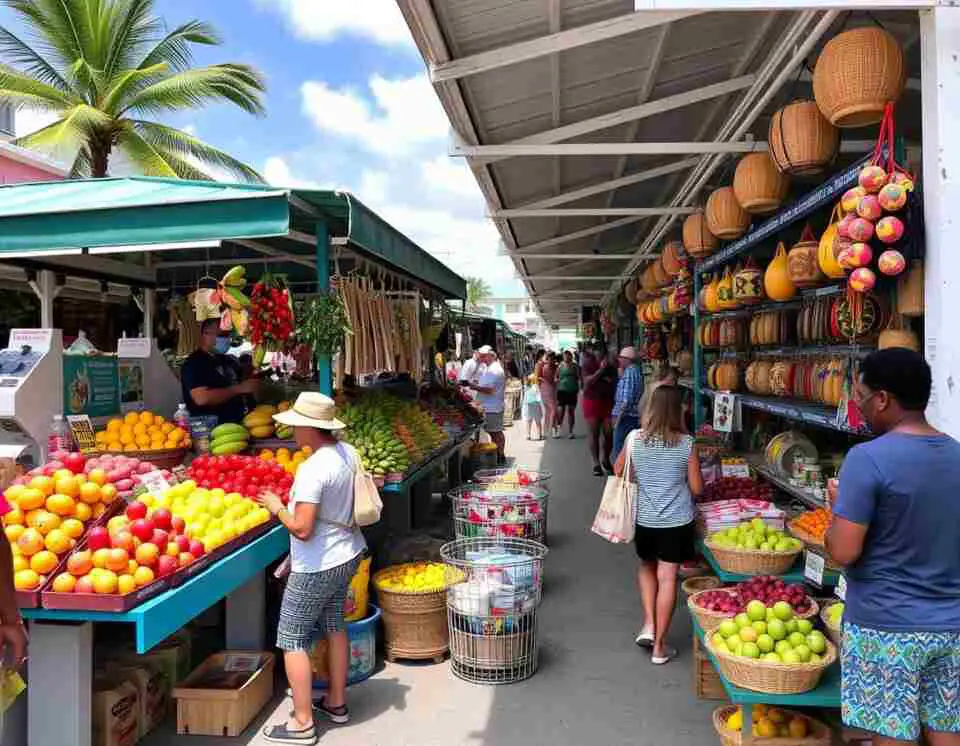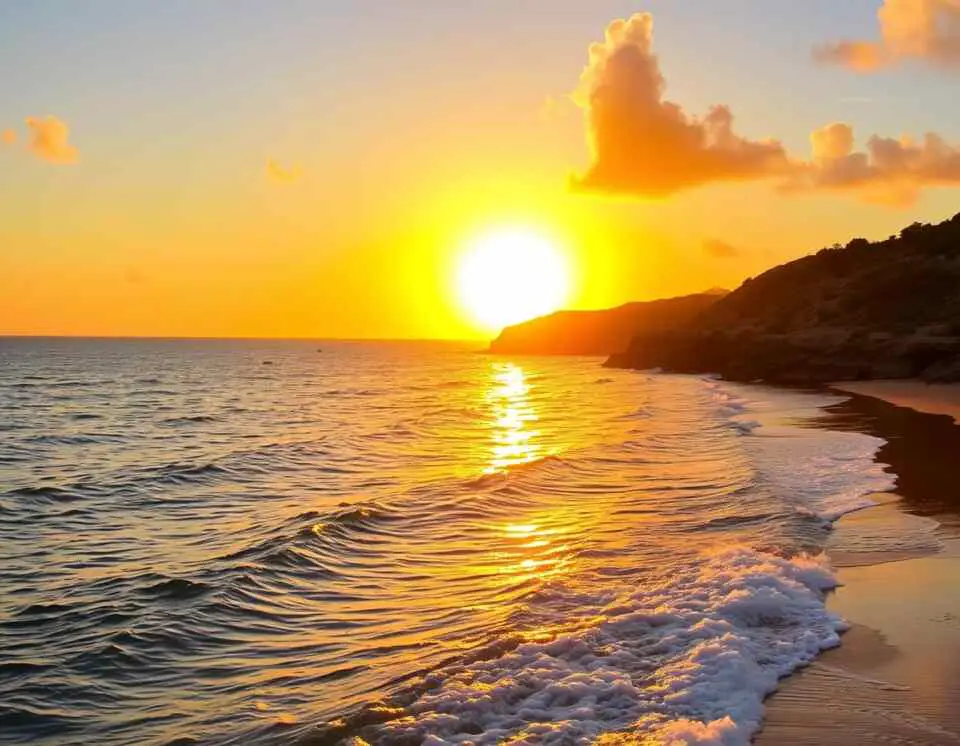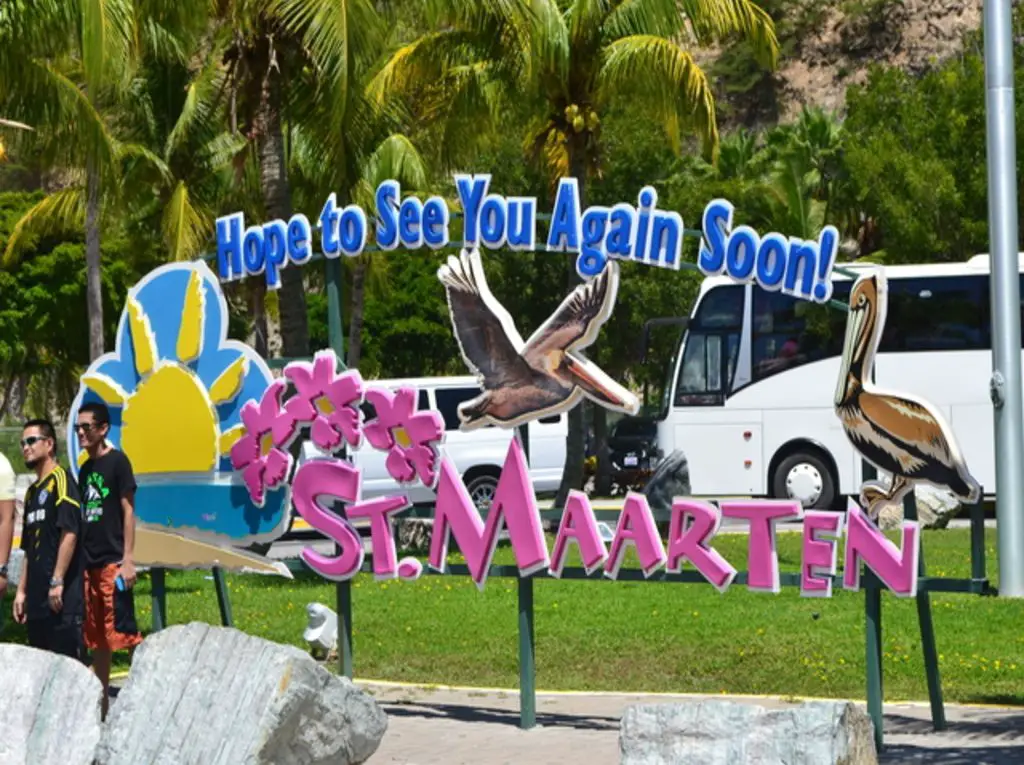The Ultimate St. Maarten Travel Guide: Discover Paradise!

Welcome to my St. Maarten Travel Guide! As someone who calls this Caribbean gem home, I’m excited to share all the hidden spots and insider tips I’ve picked up over the years. I’ve lived here for over a decade, and I’m here to show you the side of St. Maarten that most visitors miss—because there’s so much more to this island than the typical tourist spots.
Click the Play button below to listen to our podcast:
Table of Contents
- 1 Why St. Maarten Should Be Your Next Vacation Spot: A Tale of Two Cultures
- 2 Top Attractions and Activities: Beyond the Brochure
- 3 Culinary Delights: A Gastronomic Journey Through St. Maarten
- 4 Expert Tips for Your St. Maarten Adventure
- 5 Pros and Cons: An Honest Assessment
- 6 Verdict: Your Caribbean Dream Awaits in St. Maarten
- 7 Author
Why St. Maarten Should Be Your Next Vacation Spot: A Tale of Two Cultures
St. Maarten isn’t just another Caribbean island; it’s a unique cultural experiment that has been unfolding for over 350 years. As someone who’s witnessed the island’s evolution over the past decade, I can attest to the fascinating blend of Dutch pragmatism and French joie de vivre that creates an atmosphere unlike anywhere else in the world.
The island’s dual personality is evident in everything from its architecture to its cuisine. On the Dutch side, you’ll find colorful colonial buildings and bustling casinos, while the French side boasts charming villages and gourmet restaurants. This duality extends to the legal systems, currencies, and even the electrical outlets used on each side. It’s like visiting two countries for the price of one, with the added bonus of seamless border crossings that allow you to experience both cultures in a single day.
What’s truly remarkable about St. Maarten is how this dual heritage has created a unique island identity. The locals, known as Sint Maarteners, have developed their own creole language, culture, and traditions that blend elements from both sides. This fusion is particularly evident in the island’s music scene, where you’ll hear a mix of calypso, reggae, zouk, and even European pop influences.
The island’s history is equally fascinating, with tales of pirates, salt mining, and colonial struggles. Visit the St. Maarten Museum in Philipsburg to delve deeper into this rich past, or take a guided historical walking tour in Marigot to see French colonial architecture up close. For a more immersive experience, consider staying at one of the island’s historic plantation houses, now converted into boutique hotels, where you can sleep in rooms that once housed sugar barons and their families.
Unparalleled Cultural Diversity: More Than Just Two Flags
St. Maarten is home to an incredibly diverse population, with over 120 nationalities represented on this small island. This multicultural heritage is reflected in the island’s lesser-known festivals, like the Jouvert Jump Up, a pre-dawn street party that kicks off Carnival with a riot of colors and sounds.
The island’s diversity is also evident in its religious landscape. You’ll find Catholic churches, Protestant chapels, synagogues, and even a Hindu temple. This mix of faiths has given rise to unique cultural celebrations throughout the year. For instance, the Fête de Saint Martin in November combines French traditions with Caribbean flair, featuring parades, local music, and culinary competitions that showcase the island’s fusion cuisine.
This cultural melting pot has also influenced the island’s art scene. Visit the Roland Richardson Gallery in Marigot to see works by the “Father of Caribbean Impressionism,” whose paintings capture the island’s vibrant colors and diverse people.
The island’s culinary scene is perhaps the most delicious expression of its diversity. In addition to French and Dutch influences, you’ll find restaurants serving everything from Indian curries to Japanese sushi. The weekly Islandz Food Fest in Philipsburg is a great way to sample this diversity, with food trucks and stalls offering dishes from around the world.
Language is another fascinating aspect of St. Maarten’s diversity. While English is widely spoken, you’ll also hear Dutch, French, Spanish, Papiamento, and various Creole dialects. Consider taking a language class during your stay to learn some basic phrases – it’s a great way to connect with locals and deepen your understanding of the island’s culture.
Perfect Weather Year-Round: A Tropical Paradise
St. Maarten boasts a warm, sunny climate throughout the year. Average temperatures range from 72°F to 86°F (22°C to 30°C). While January to March are indeed pleasant, I’ve found that September to November offer a sweet spot of lower prices, fewer crowds, and surprisingly stable weather.
The island’s location in the Leeward Islands means it’s sheltered from the worst of the hurricane season, which officially runs from June to November. However, even during these months, the chances of encountering a major storm are relatively low. The island’s microclimate can create interesting weather patterns, with brief, refreshing showers that quickly give way to sunshine. These “liquid sunshine” moments, as locals call them, can create stunning rainbows over the Caribbean Sea, perfect for photo opportunities.
Understanding St. Maarten’s weather patterns can help you plan the perfect trip. The driest months are typically February to April, making this an ideal time for beach activities and outdoor adventures. However, this is also peak tourist season, so expect higher prices and more crowds.
The summer months (June to August) can be slightly warmer and more humid, but they offer great opportunities for water sports enthusiasts. The trade winds pick up during this time, creating ideal conditions for parasailing, windsurfing and kiteboarding, especially in Orient Bay.
If you’re interested in wildlife, plan your visit during the sea turtle nesting season from April to November. Several beaches on the island, including Guana Bay and Simpson Bay, are important nesting sites for leatherback, hawksbill, and green turtles. You can join guided night walks to witness this amazing natural spectacle.
For stargazers, the clearest night skies are usually found in the winter months (December to February).
Regardless of when you visit, be sure to pack light, breathable clothing, plenty of sunscreen, and a good hat. The Caribbean sun can be intense, even on cloudy days. Also, consider bringing a light raincoat or umbrella for those occasional short showers – they’re a small price to pay for the lush tropical landscapes they help maintain.

Top Attractions and Activities: Beyond the Brochure
Breathtaking Beaches: The Locals’ Secrets
While Maho and Orient Bay are tourist favorites, let me introduce you to some hidden gems that locals cherish:
- Cupecoy Beach: This secluded cove is my go-to spot for watching the sunset. The limestone cliffs not only provide a stunning backdrop but also offer natural jacuzzis formed by the waves at low tide.
- Petite Plage: Located near Grand Case, this tiny beach is often overlooked by tourists. I’ve spent countless peaceful mornings here, sometimes being the only person on the entire stretch of sand.
- Baie Rouge: The red sand here is a geological marvel, offering a unique beach experience compared to the island’s more famous white sand beaches.
For those seeking a truly off-the-beaten-path experience, consider taking a day trip to Tintamarre Island. This uninhabited islet off the northeast coast of St. Maarten is accessible only by boat and offers pristine beaches and excellent snorkeling opportunities. The island is also known for its natural mud baths, said to have healing properties. Pack a picnic, plenty of water, and sunscreen for a day of Robinson Crusoe-style adventure.
Beyond these hidden gems, each of St. Maarten’s beaches has its own unique character worth exploring. Happy Bay, accessible only by boat or a 10-minute hike, offers a secluded paradise with calm waters perfect for swimming. Friar’s Bay, with its two beach bars and family-friendly atmosphere, is ideal for a relaxed day out.
For those interested in marine life, Kim Sha Beach in Simpson Bay is known for its sea grass beds, which attract sea turtles and rays. Bring a snorkel and mask to explore this underwater world.
Beach enthusiasts should also consider timing their visit with the annual SXM Festival in March. This electronic music event transforms several of the island’s beaches into dance floors, offering a unique way to experience St. Maarten’s coastline.
Remember that all beaches in St. Maarten are public, even those in front of resorts. However, some may charge for parking or lounger rentals. Always respect the environment by taking your trash with you and avoiding disturbing any wildlife you encounter.
Thrilling Water Sports: Dive into Adventure
St. Maarten offers a variety of water sports and unique experiences for adventure seekers. From snorkeling and scuba diving to jet skiing and windsurfing, there’s no shortage of ways to enjoy the crystal-clear waters surrounding the island.
For a unique underwater experience, check out the Underwater Sculpture Park Snorkel Adventure. This initiative has created an artificial reef using eco-friendly materials, including submerged sculptures. Snorkeling or diving here offers a blend of art and marine conservation. Advanced divers might want to explore the wreck of the HMS Proselyte, a British frigate that sank in 1801 and now serves as an underwater museum.
Kite surfing has gained popularity in recent years, especially in Orient Bay. The consistent trade winds make it an ideal spot for both beginners and experienced kite surfers. Several schools offer lessons, and the sight of colorful kites dancing above the waves is a spectacle in itself.
For those who prefer to stay above water, stand-up paddleboarding (SUP) has become increasingly popular. The calm waters of Simpson Bay Lagoon are perfect for beginners, while more experienced paddlers can explore the mangrove forests on the French side of the lagoon. Some operators even offer SUP yoga classes – a unique way to challenge your balance and enjoy the beautiful surroundings.
Fishing enthusiasts will find plenty of opportunities in St. Maarten’s waters. Deep-sea fishing charters can take you out to catch marlin, tuna, and mahi-mahi. For a more local experience, try your hand at traditional handline fishing with a local guide.
For a truly unique perspective of the island, try flyboarding. This futuristic water sport uses water jet propulsion to lift you up to 15 meters in the air. It’s available at several locations around the island and offers an adrenaline rush like no other.
If you’re visiting between January and April, don’t miss the chance to go whale watching. Humpback whales pass by St. Maarten on their annual migration, and several operators offer tours to spot these majestic creatures.
Remember to always prioritize safety when engaging in water sports. Choose reputable operators, follow all safety instructions, and be aware of your own limitations. The island’s marine park authorities also ask visitors to be mindful of the environment, avoiding touching or stepping on coral reefs and respecting marine life.
Hiking and Nature Exploration: Off the Beaten Path
While Pic Paradis is popular, there are lesser-known trails that offer equally stunning views:
- Guana Bay to Geneve Bay: This coastal hike offers dramatic ocean views and the chance to see nesting sea turtles during the right season (May to October).
For nature enthusiasts, the Seaside Nature Park offers a unique way to explore the island’s diverse ecosystems. Their horseback riding tours take you through mangrove forests, along secluded beaches, and into the hills for panoramic views. It’s a great way to access areas that are difficult to reach on foot or by car.
Bird watchers should visit the Salt Pond in Philipsburg. Despite its urban location, this area attracts a variety of bird species, including herons, pelicans, and even flamingos during certain times of the year. The contrast between the bustling town and this natural oasis is striking and offers a different perspective on the island’s biodiversity.
For a more challenging hike, consider the trail to Fort Louis in Marigot. This 18th-century fort offers panoramic views of the bay and neighboring islands. The hike itself is relatively short but steep, so wear sturdy shoes and bring plenty of water.
Nature lovers shouldn’t miss the Loterie Farm Nature Reserve. This 135-acre private nature reserve offers hiking trails through lush tropical forest, zip-lining adventures, and a treetop obstacle course. It’s also home to the island’s highest point, Pic Paradis, which offers breathtaking views of the surrounding islands.
For a unique ecological experience, visit the Parotte Ville Bird Park in French Cul de Sac. This small sanctuary is home to over 100 exotic birds and offers a hands-on experience where visitors can feed and interact with the birds.
If you’re interested in marine ecology, consider joining a coral restoration dive with the Ocean Explorers Dive Center. You’ll learn about the threats facing coral reefs and participate in efforts to regrow and replant coral.
Remember to always stay on marked trails, carry out any trash, and respect wildlife. Many of these areas are protected, and preserving them is crucial for the island’s ecological balance and future tourism.
Shopping Paradise: Beyond Duty-Free
While Front Street’s duty-free shops are well-known, here are some unique shopping experiences I’ve discovered:
- Marigot Fish Market: Every morning, local fishermen sell their fresh catch here. I’ve bought snapper and mahi-mahi for a fraction of restaurant prices and had them grilled at a nearby lolo (local outdoor eatery).
For a more authentic shopping experience, explore the West Indies Mall in Marigot. This open-air market features local artisans selling handmade jewelry, tropical-print fabrics, and unique souvenirs. It’s a great place to find one-of-a-kind items and support local craftspeople.
Art enthusiasts should check out the galleries in Grand Case. This small town on the French side has become a hub for Caribbean artists. You’ll find everything from traditional paintings to contemporary sculptures, often inspired by the island’s vibrant culture and natural beauty. Some galleries even offer shipping services, making it easy to bring a piece of St. Maarten home with you.
For luxury shoppers, the Jewelery stores in Philipsburg offer a wide range of high-end watches, diamonds, and other precious gems at duty-free prices. Many of these stores have been family-owned for generations and offer personalized service.
If you’re interested in local products, visit the Guavaberry Emporium in Philipsburg. Here you can sample and purchase guavaberry liqueur, a traditional St. Maarten spirit made from rum and wild guavaberries. They also sell other local products like hot sauces, spices, and jams.
For a unique souvenir, consider visiting one of the island’s shops. The Amsterdam Cheese & Liquor Store in Simpson Bay offers a wide selection of Dutch cheeses and liquors.
Fashion lovers should check out the boutiques in Porto Cupecoy on the Dutch side. This upscale marina complex features several clothing and accessory shops selling both international and local Caribbean brands.
Remember that while St. Maarten is duty-free, there are still limits on how much you can bring back to your home country. Be sure to check your country’s customs regulations before making large purchases.

Culinary Delights: A Gastronomic Journey Through St. Maarten
St. Maarten’s food scene goes far beyond the tourist restaurants. The island is known for its diverse and flavorful cuisine, with street food stalls called “lolos” offering authentic Caribbean Creole comfort food.
Must-Try Local Dishes
- Johnny Cakes: These fried cornmeal flatbreads are a local favorite, often served as a side dish or stuffed with various fillings.
- Conch and Dumplings: A hearty stew made with conch meat and dough dumplings, flavored with local spices.
For a truly unique dining experience, book a table at one of the island’s “sky dining” events. These pop-up dinners take place on rooftops or scenic locations around the island, offering gourmet meals with breathtaking views. Local chefs often collaborate to create menus that showcase the best of St. Maarten’s culinary traditions with a modern twist.
Don’t miss the chance to try some of the island’s local spirits. Guavaberry liqueur, made from rum and wild guavaberries, is a traditional St. Maarten drink. Visit the Guavaberry Emporium in Philipsburg to learn about its history and sample different varieties. For beer lovers, the Dutch Blonde Brewery offers tours and tastings of their craft beers, which are brewed using local ingredients like mango and soursop.
St. Maarten’s culinary scene is a reflection of its diverse cultural influences. In Grand Case, known as the culinary capital of the Caribbean, you’ll find a mix of high-end French restaurants and local barbecue joints called lolos. Don’t miss the opportunity to try lobster at one of the beachfront restaurants – it’s often grilled right on the beach.
For a taste of Dutch cuisine, head to Philipsburg where you can find traditional treats like stroopwafels and poffertjes. The Amsterdam Cheese & Liquor Store offers a wide selection of imported Dutch cheeses and spirits.
Seafood lovers should visit the fish market in Marigot early in the morning to see the day’s catch being brought in. Many restaurants around the island serve fresh catch of the day, so be sure to ask your server what’s available.
For a unique dining experience, consider a dinner cruise around the island. Several companies offer sunset cruises that include a gourmet meal and open bar, allowing you to enjoy the island’s beauty from the water while indulging in local flavors.
Don’t overlook the island’s street food scene. The Marigot market on Wednesday and Saturday mornings is a great place to sample local specialties like accras (salt cod fritters), boudin (blood sausage), and fresh coconut water straight from the shell.
For dessert lovers, the Belgian Chocolate Box in Simpson Bay offers handmade chocolates with tropical flavors like passion fruit and mango. And no visit to St. Maarten is complete without trying a guavaberry colada, a local twist on the piña colada using the island’s signature guavaberry liqueur.
For those interested in learning more about local cuisine, consider taking a cooking class. Several restaurants and resorts offer classes where you can learn to make traditional dishes like callaloo soup or coconut dumplings.
Remember that tipping customs can vary between the Dutch and French sides of the island. On the Dutch side, a 15-20% tip is customary, while on the French side, service is usually included in the bill.
Expert Tips for Your St. Maarten Adventure
- Learn Creole Phrases: While English is widely spoken, knowing a few Creole phrases can open doors. “Ki mannyè ou yé?” (How are you?) always brings a smile to locals’ faces.
- Attend a Local Church Service: Even if you’re not religious, the gospel choirs at some local churches offer a soul-stirring experience that provides insight into island culture.
- Use Licensed Transportation: For safety and reliability, it’s advisable to use official taxi services or rental cars to explore the island.
- Visit During Carnival: While it’s busier, experiencing Carnival (usually in April) offers an unparalleled insight into local culture. The French side’s Carnival in February is smaller but equally vibrant.
- Explore Both Sides: Make sure to spend time on both the Dutch and French sides of the island. Each has its own unique charm and attractions. Consider staying on one side for part of your trip and the other side for the remainder to fully experience the island’s dual personality.
- Take a Cooking Class: Several restaurants and resorts offer cooking classes where you can learn to prepare local dishes. It’s a fun way to immerse yourself in the island’s culinary culture and take home a new skill.
- Respect the Environment: St. Maarten’s natural beauty is one of its greatest assets. Be mindful of your impact by using reef-safe sunscreen, avoiding single-use plastics, and participating in beach clean-up events if possible.
- Island Hop: Take advantage of St. Maarten’s central location to visit nearby islands. Day trips to Anguilla, St. Barths, or Saba are easily arranged and offer a chance to experience different Caribbean cultures.
- Try Local Transportation: While rental cars are convenient, consider trying local buses (on the Dutch side) or collectivos (shared taxis on the French side) for a more authentic experience. It’s a great way to meet locals and see parts of the island you might otherwise miss.
- Attend a Local Festival: Beyond Carnival, St. Maarten hosts numerous festivals throughout the year. The Heineken Regatta in March, the SXM Music Festival in March, and the Food and Wine Festival in November are all worth planning your trip around.
- Visit a Local School: Some schools on the island welcome visitors for cultural exchange programs. It’s a great way to give back to the community and gain insight into local life.
- Learn About Local History: Visit the St. Maarten Museum in Philipsburg or take a guided tour of the ruins of Fort Amsterdam to learn about the island’s rich history, from its indigenous Arawak inhabitants to its colonial past.

Pros and Cons: An Honest Assessment
Pros:
- Unique dual-nation culture that offers a European flair in a Caribbean setting
- Some of the Caribbean’s best dining options, from haute cuisine to local street food
- Excellent duty-free shopping with better prices than many other Caribbean destinations
- Diverse landscapes, from beaches to hills, offering varied activities
- Easy island-hopping opportunities to nearby Anguilla, St. Barths, and Saba
- Vibrant nightlife and casino scene, particularly on the Dutch side
- Excellent sailing and yachting facilities, including several marinas
- Direct flights from many major cities in North America and Europe
- Generally safe for tourists with a welcoming local population
- Year-round warm weather and beautiful beaches
- Rich cultural heritage and numerous festivals throughout the year
Cons:
- Over-development in some areas has led to traffic congestion, especially around Philipsburg
- Some beaches have suffered erosion due to hurricanes and over-tourism
- The island can feel crowded when multiple cruise ships are in port
- Petty crime can be an issue in some areas, particularly at night
- High season prices can be steep compared to other Caribbean destinations
- Environmental challenges, including waste management and coral reef degradation
- Occasional power outages, particularly during hurricane season
- Limited public transportation options, making car rental often necessary
- Potential language barriers, especially on the French side for non-French speakers
- Risk of hurricanes during the Atlantic hurricane season (June to November)
- Some areas may feel too commercialized or “touristy” for travelers seeking an authentic experience
Verdict: Your Caribbean Dream Awaits in St. Maarten
St. Maarten is more than just a beach destination; it’s a cultural kaleidoscope that rewards those willing to look beyond the surface. While it faces challenges common to many Caribbean islands, its unique dual heritage, culinary scene, and natural beauty make it a standout destination.
Whether you’re sipping a guavaberry colada at a beach bar, hiking to a hidden waterfall, or chatting with locals at a fish fry, St. Maarten offers experiences that will stay with you long after your tan fades. So pack your sense of adventure, leave your preconceptions behind, and get ready to discover the real St. Maarten. This island isn’t just a place to visit; it’s a place to connect with, to savor, and to carry in your heart long after you’ve left its shores.
Remember, the true magic of St. Maarten lies in its people and their stories. Take the time to engage with locals, learn about their history and culture, and you’ll find that this small island has a big heart. From the fishermen at the Marigot market to the artists in Grand Case, everyone has a story to tell.
As you plan your trip, keep in mind that St. Maarten is constantly evolving. New restaurants open, attractions change, and the island continues to recover and rebuild from past hurricanes. This resilience is part of what makes St. Maarten special – it’s an island that faces challenges head-on and comes back stronger.
So whether you’re a first-time visitor or a returning traveler, approach your St. Maarten adventure with an open mind and an open heart. Embrace the island’s quirks, savor its flavors, and immerse yourself in its unique blend of cultures. You might arrive as a tourist, but you’ll leave feeling like a part of the St. Maarten family.
Images created using PicLumen.


